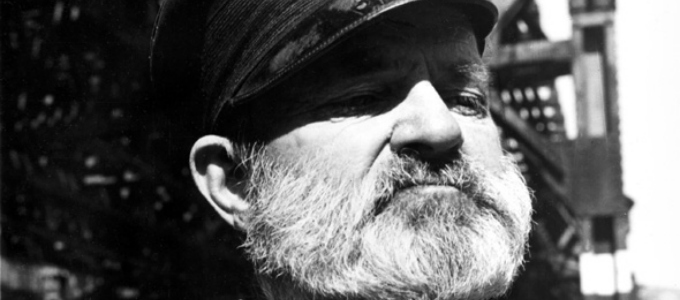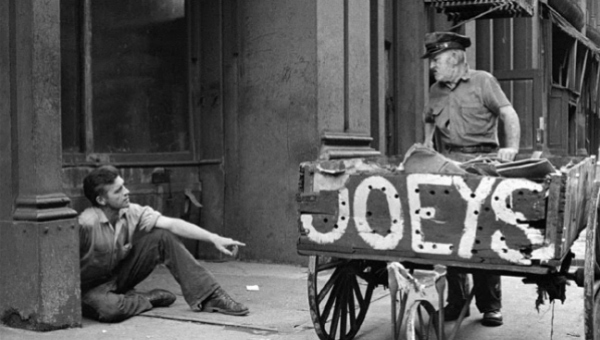
This film is a forgotten classic. Made in 1956 in the USA without any interferences from the studio behemoths, it is revolutionary for its time, becoming the first American documentary to win a prize at the Venice Film Festival and inspiring the likes of John Cassavetes in terms of film production, shooting and dramatic methods. The film depicts the life on the neighbourhood surrounding the Bowery street in New York, described by a pastor in the film as the saddest, maddest street in the world.
ON THE BOWERY is innovative in the way it mixes fiction with documented reality, and introduces improvisational acting with non-professional actors – the actual men of the Bowery itself. Lionel Rogosin, the filmmaker, did an extensive research for months getting to know the area and the people. He persuaded some of them to play in this film. He devised the storyline and the characters based on their actual personalities and problems, such as homelessness and alcoholism. Indeed, the two people playing the two main characters in the film met tragic ends (one went missing and the other died), heightening the poignant sense of the film.
It is a study of the faces of desperation, and an affecting portrayal of people on the margins.
The film is only 65 minutes long, with a refreshingly non-convoluted plot. A man arrives at the area to find a job. His suitcase, which contains all his belongings, is stolen. Completely penniless and without a home, he is befriended by the thief, who later shares with him the money he receives from selling the stolen stuff. The film is, however, much more than its plot. It is a study of the faces of desperation, and an affecting portrayal of people on the margins. Many parts of the film feel like photography, especially with some choppy non-continuous sound editing. These are captured with affectionate and non-patronising eyes, imbuing them with a certain dignity. Its achievement in finding humanity in poverty and squalor is, perhaps, only comparable to ancient paintings, such as Pedlar by Hieronymus Bosch and Peasant’s Meal by Louis Le Nain. ON THE BOWERY also contains beautiful night scenes, the lights on the street and building facades resembling and rivalling the ones achieved for the street of Paris in an early classic of French New Wave, ASCENSEUR POUR L’ECHAFAUD.
ON THE BOWERY, and other similar films immediately after it such as Cassavetes’ SHADOWS, signals the emergence of independent filmmaking in the USA. They were enabled by the availability of a cheaper, lighter and nimbler version of camera, requiring only small number of crews to, not too intrusively, capture performances and document reality. This has parallels with some aspects of the current age of digital filmmaking, with its small, affordable cameras which produce reasonably good images.
The screening at Cambridge Film Festival used a 35mm projected film: a recent restoration of the original master, nostalgically projected in a box ratio with on-screen flickers. It was also screened with a short film, THE PERFECT TEAM, by Michael Rogosin, the son of the filmmaker; providing a crucial context on the making of the film.
httpvh://youtu.be/CHuYXEwCk_U

